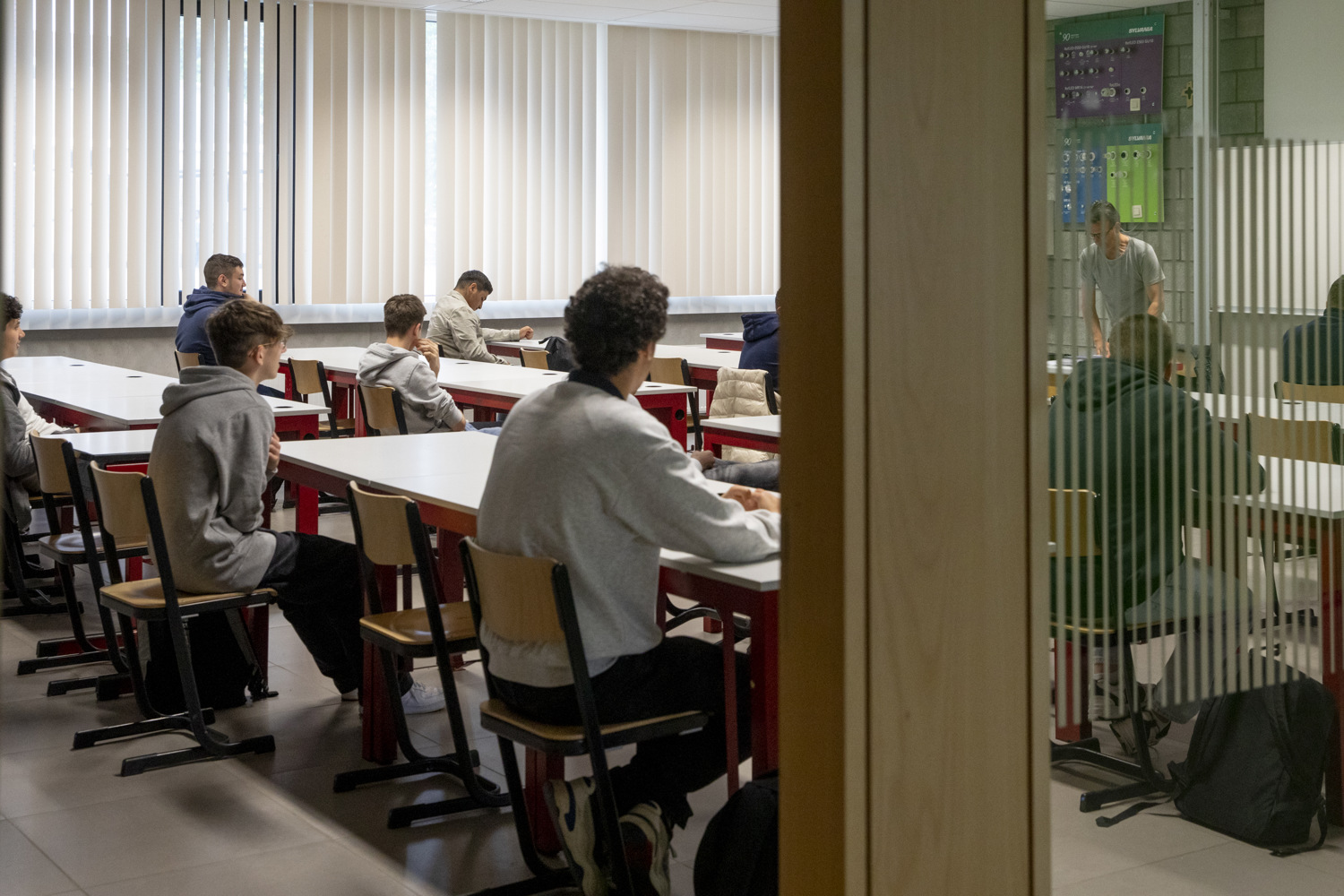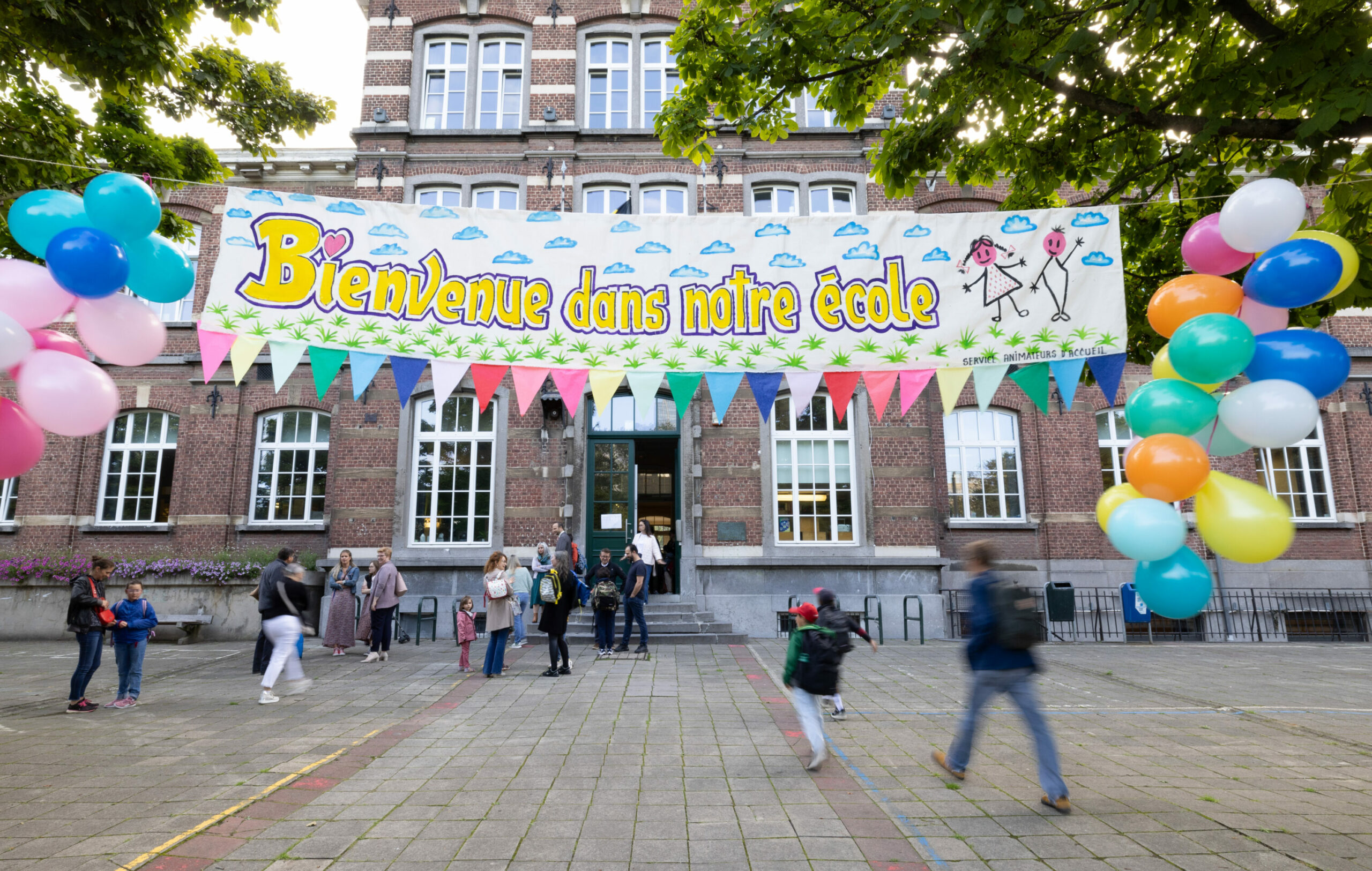There are many benefits to newcomers sending their children to Belgian schools, from the chance of learning a new language to gaining access to cheap, quality education. However, navigating the systems can be complex.
Belgium has a decentralised education system, which can make it challenging for those who grew up outside the country. On the occasion of the 2024-2025 school year rentrée, this explainer delves into the various complexities, what to know before sending your child to a Belgian school, the costs and more.
Key knowledge
Primary and secondary education in Belgium (excluding international or European schools) is funded by the government, meaning there are no tuition fees, but there are additional costs to take into account.
In Wallonia, pupils are entitled to free materials up to the third year of primary school, bringing down costs. In Flanders, the cost ranges from around €700 per year in primary education to €1,650 in secondary education, depending on the school.
Education is compulsory between the ages of 5 and 18, both for Belgian citizens and newcomers from abroad. However, attendance is not obligatory: home schooling is possible under certain conditions, while from the age of 15, students can combine going to school part-time and working part-time.
Nursery schools – for which attendance is not compulsory – welcome children from the age of 2.5, while pupils enter the first year of primary school between the ages of five and six. After the successful completion of the six-year primary school trajectory, children tend to start secondary school around the age of 12. This period is also divided into six years, with pupils graduating when they are already or about to turn 18.
Registration is obligatory when a child is entering a school for the first time, when moving from primary to secondary education or when moving to a new school.
School registration usually takes place early in the year, often as early as February or March, depending on the region. Many schools require pre-registration to ensure children can go to their school of choice. Parents are advised to pay close attention to the registration periods in urban areas where schools fill up quickly. Many schools give priority to siblings of their pupils.
Language divide
Belgium's education system is fragmented, run by the different language communities: the Flemish Community (overseeing Dutch-speaking schools in Flanders and Brussels), the French Community (for the French equivalent), and the German-speaking Community (which organises the German-speaking schools).
The instruction language often plays the biggest role in parents' choice. However, the Flemish and French-speaking systems, comprising most of the schools, differ on other levels.

Pupils in the classroom. Credit: Belga
"Parents need to be aware of these differences and the implications for their children's educational careers," Lieselot Declercq, founder of D-teach, an international non-profit organisation behind the first online school in Belgium, told The Brussels Times. "It is important to understand how the curriculum works, what the expectations are in terms of language skills, and what options there are for further education."
Overall, Belgian education is generally among the best-rated education systems in Europe, performing well in international rankings such as the OECD's Programme for International Student Assessment (PISA), with strong results in maths, science and reading skills. However, there are differences between communities, with the Flemish system tending to score higher. There is also criticism of inequality within the system, especially in Brussels.
Forms of education
The Flemish Community's secondary school system is divided into four forms of education. "General Secondary Education" (ASO), also referred to as transitional education, prepares students for higher studies, and focuses mainly on theory and general knowledge.
The six years are divided into three stages of two grades, with the first being more general, focusing on a broad education. At the beginning of the second stage students have to choose between fields of study, with a focus on specific subjects, such as Latin, Economics and Sciences.
"Technical Education" (TSO) also provides theoretical training, while offering more concrete and technical courses. "Vocational Education (BSO) is strongly practice-oriented so students can pursue a profession immediately after graduating. Finally, "Arts Education" (KSO) is organised in the same way as TSO, but the electives focus on arts rather than technical subjects.
In the region, ASO remains the most popular choice (accounting for around 38%), but its pupil share is declining, while TSO – the second most popular option – and BSO are attracting a rising number of people.
In the French Community, there are similar forms of education. The "Enseignement Général" is similar to ASO, "Enseignement Technique" can be compared to TSO, while "Enseignement Professionnel" is similar to BSO.
"The Walloon system does put more emphasis on technical and vocational training, and the structure can sometimes be more flexible, with, for example, less strict divisions between the different pathways," Declercq explained.
How to choose a school
Most people living in Flanders send their child to a Dutch-speaking school, while Walloons are likely to send theirs to a school in the French-speaking system.
However, some bilingual families living in one of the regions sometimes opt for a school in the region across the language border to ensure their child has a solid grasp of both languages. Some schools do give priority to people living nearby.
In Brussels, parents can choose between Dutch-speaking and French-speaking schools within the region, although there are generally more Francophone institutions.
Several factors should be considered, including the language skills, but also a child's future prospects. "The choice of language of instruction can affect future prospects, such as studying at universities in Flanders or Wallonia, and career opportunities in Belgium or abroad."
Generally, Dutch-speaking schools are, for example, rated more highly when it comes to teaching languages. Other practical factors such as proximity to the school and availability of extracurricular activities should also be contemplated, as well as school culture.
"It is not necessarily wrong to think that one system would be better, but there is no single answer to this question," Declerq said. "This assessment is often subjective and depends on the specific needs and goals of the child and family. Parents can visit schools and talk to other parents to get an idea of school culture and quality."

Credit: Belga/ Benoit Doppagne
Schools in both communities set language targets for non-native pupils. For children entering the education system before the age of six, the transition is still considered possible, however, from the second year of primary school, this process becomes more challenging.
However, there are ways to make this transition smoother for children entering the school system at a later age. Some schools, both in primary and secondary education, have reception classes – OKAN in Dutch-speaking education and DASPA in the French Community – which are specifically focused on newcomers who do not yet master Belgium's national languages. This does require additional resources, which explains why few schools have such a class.
The online school D-teach exists for this reason, helping children to reach the language targets set by schools.
Exam system
Pupils sit exams in both primary and secondary school in the two education systems. The results of the final tests in primary school are important for progression to secondary education, especially when choosing a specific form of education. In secondary school, results are especially important in the final year (sixth year), as they determine admission to higher education.
In most ASO or "Enseignement Général" schools, the results at the end of every year determine what subjects a person can study, whether they have to re-sit a year or even whether they have to change schools.
Within the country's borders, the exam system differs. "In Flanders, examinations and assessments are largely organised at school level, as opposed to a central examination system or standardised tests," Declercq said. "This means that schools here have autonomy in deciding how and when exams are administered."
Advantages to this method are argued to be flexibility and the ability to tailor to students' needs, and minimises stress, as it is not a national exam board determining pupils' futures. However, the downsides are that there are possible differences in difficulty and evaluation standards between schools. It also makes it more challenging to compare pupil performance nationally. For this reason, the "Flemish tests" were introduced.
In Wallonia, pupils in the final year of primary school take external exams to obtain the Certificat d'Études de Base (CEB), granting access to the first year of secondary education.
Pupils in the second year of Walloon secondary education will sit the compulsory external tests for the CE1D, taken simultaneously in all schools. These cover mathematics, French, modern languages and science. In the final year of secondary school, the CESS tests take place. Students who pass all subjects in the year of study can then start higher education.

